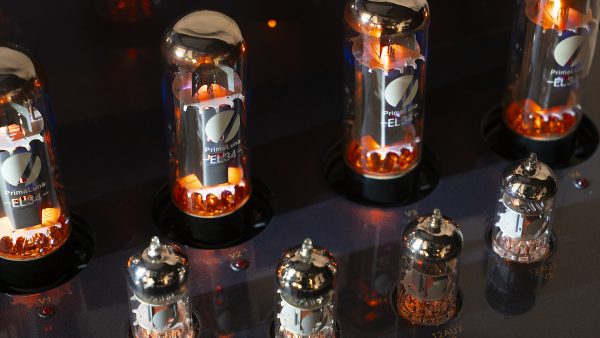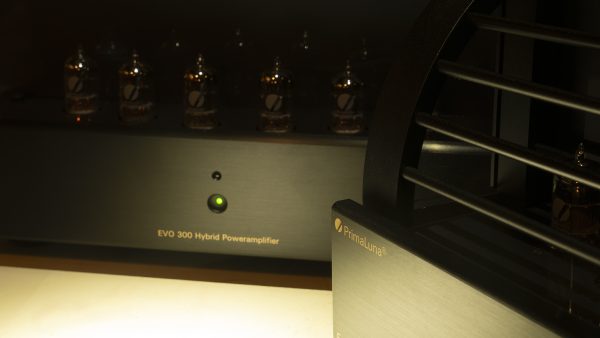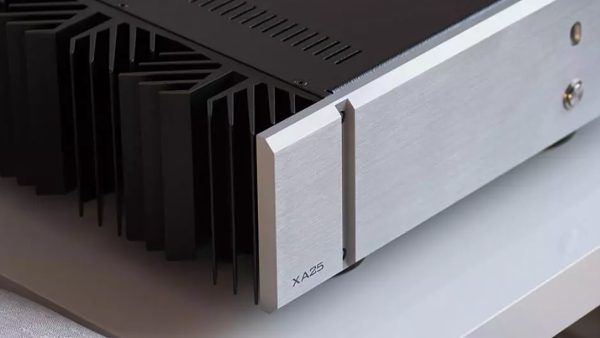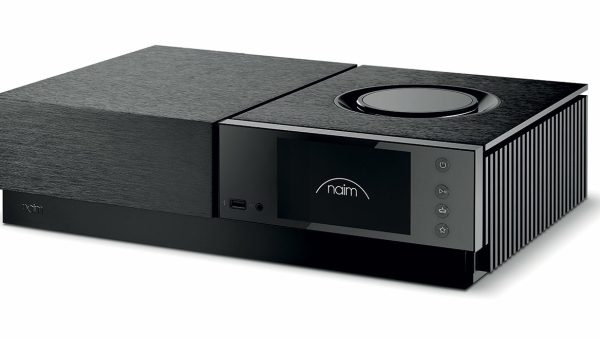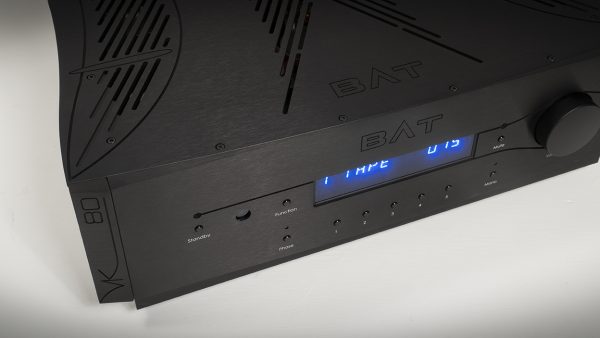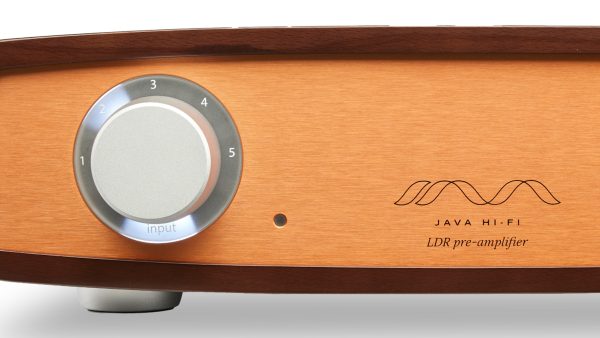A compact benchmark.
Listening to the powerful kettle drums in the title track (“The House”) from the Home Alone soundtrack is stunning in the lifelike presentation delivered by the Peak Consult Sinfonia speakers. No subwoofer, no loom of cables – just the CH Precision I1 streaming from Qobuz at 16/44 to a pair of speakers. Amazing. (Though I did add a six-pack of REL S/510s later on…) After a few more days of exhausting several favorite tracks, analog and digital, it’s tough to believe a large rack of gear is not the center of this music system. At nearly $70k/pair, the Sinfonias are not an afterthought in the speaker department either.
Having had the privilege of listening to this integrated amplifier for an entire year as a long-term test, I’m as excited about it as I was the day I unboxed it. But this amplifier is not for everyone. We will have our fair share of detractors who will complain about the expense. This review is not for you.
This review is for the music lover who would love to have a large portion of the sonic experience delivered by a six-figure, full-blown CH Precision music system but does not need the level of power or the ultimate resolution of what a $500k stack of CH provides. The 100 watts per channel (8 ohms) the i1 provides should be more than enough for an incredibly wide range of speakers. Taking this logic further, the I1 combined with CH’s D1.5 CD/SACD transport, your favorite $20-30k turntable/arm/cartridge combination and a great pair of speakers, you can have a serious portion of what a cost no object system will deliver, and play every form of disc there is.
Further, this amplifier is for someone who truly appreciates the high level of engineering prowess that makes the I1 what it is. The casework is flawless, the machining exquisite, and there are no visible screws anywhere to be seen. This amplifier is as much a testament to industrial design and execution as it is electronic performance. Both complement each other. You can buy cameras that do most of what a Leica does for less money. But it’s not the same. That’s what the I1 brings.
For certain music lovers, the visual footprint is just as exciting as the audible performance. This is who the CH integrated is for. None of this is “audio jewelry,” either. No big, blingy meters, bright colors, or large buttons anywhere. The classic aesthetic of the I1 is something I suspect you’ll never tire of, and like a piece of iconic furniture or a fantastic piece of art, you will never tire of looking at it. The matte light grey casework blends with everything and is a considerable step beyond the usual black or silver offered with most components. The CH I1 is understated elegance at its finest.
CH says it best when discussing its I1 amplifier, “The I1 integrated amplifier is possibly the most complex project that CH Precision has ever undertaken – and the most versatile product we have ever produced. Imagine the core qualities and capabilities of the C1.2 DAC Controller and A1.5 Amplifier combined in a single box. Now throw in the choice parts of the L1 Line-stage and add the option of a P1 phono-stage, all combined in a single, standard CH chassis, and you begin to get the picture.”
There is not a single molecule of the I1 that is an afterthought, add-on, or compromise.
As a big fan of the slogan “Swiss Precision,” the I1 embodies this philosophy to a greater extent than anything I’ve yet experienced. I don’t know if the watch aficionados in the crowd would agree with me, but I disagree with the other audio writers who have compared the I1 to a Rolex. The I1 looks and feels much more like an IWC Big Pilot – the Ceratanium one. If this sounds like something you’re searching for…. Read on.
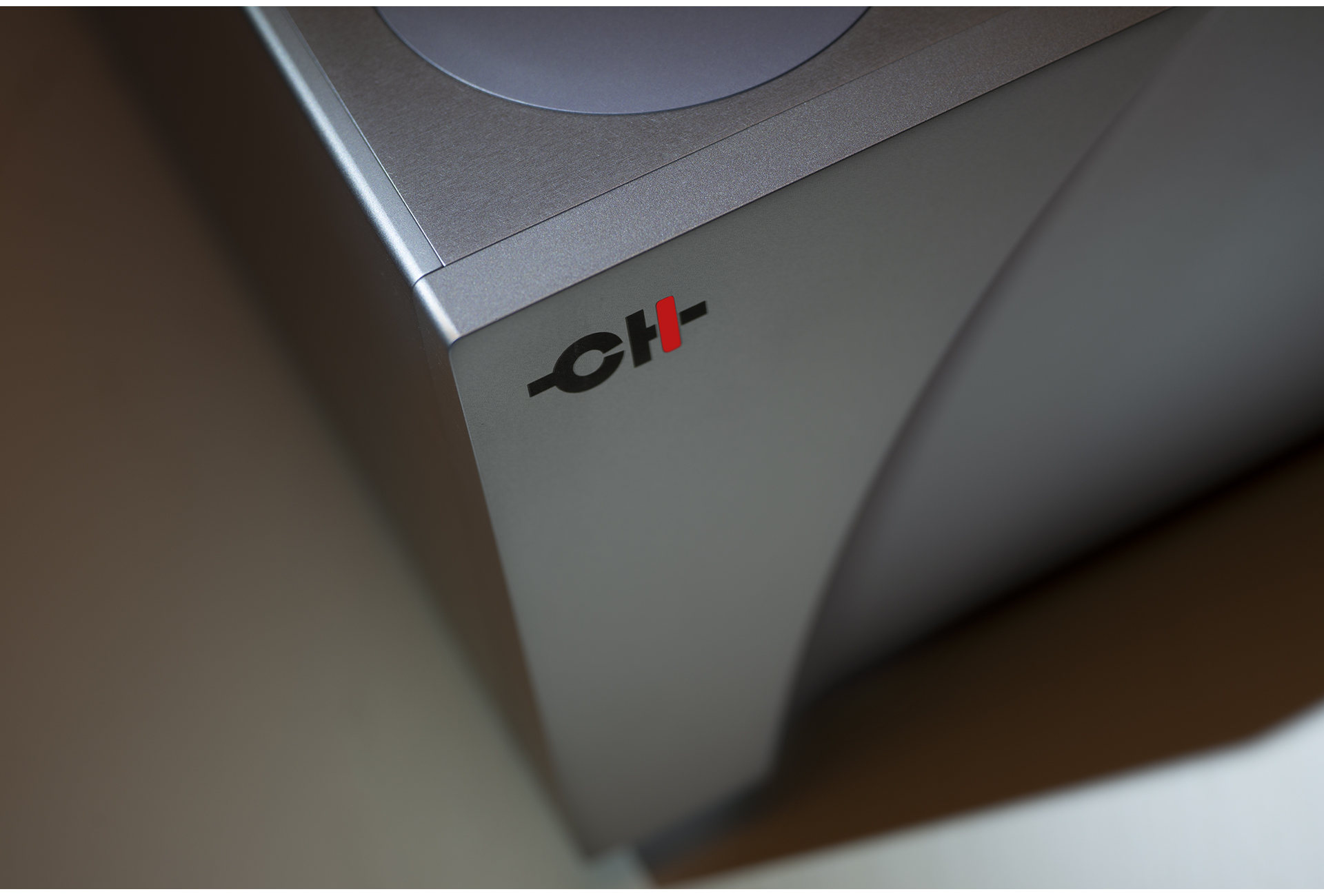
The casework has no exposed fasteners of any kind, and the tight gaps between the aluminum panels are tight. I did not take the cabinet apart to show off the internals! I can’t even imagine how long it takes to physically assemble one of these. However, I’m guessing that the massive 1000VA power transformer is a large part of the i1’s 33kg (72.7525 lb) weight.
Whether you control the I1 from the remote, the razor-sharp display on the front panel, or the Android app, everything can be labeled, adjusted, and customized to your taste. CH’s US guy, Kevin Wolff, says that an iOS app will be available soon, so that will give us further opportunities to comment.
The one thing that’s going to freak you out
Both the line-level and phono analog inputs are run through CH’s 384kHz/24-bit DXD digital conversion before sending them to the DAC and final output. The main reason for this is CH’s incorporation of a unique attenuator derived from their top preamplifier but in a hybrid design in the i1. The full R2-R resistor ladder attenuator of the L10 will not fit inside the I1 chassis, so coarse levels are set this way, while fine level (0.5dB) adjustments are made digitally.
The i1 features a two-input phono stage. Because this is a full current mode phono preamplifier, there is no need to set gain or loading. This design cannot be used with an MM phono cartridge, but it does have a setting for additional gain, should it be required. It does deliver the best result with MC cartridges on the lower side of the internal resistance scale. However, the phono stage also passes through the ADC, which may offend the most rigid analog purists.
Here’s the dividing line—if you were upset by the recent MoFi discs that included a high-resolution digital step, then this will go against your dogma. If this didn’t matter to you (put me in the latter category), then you’ll be thrilled with what CH has accomplished. After the initial 25-minute argument with a few audiophile buddies who knew better, I never thought about it again!
Should you have a source component with built-in volume control, you can bring it into the I1 via the direct input, but this is only to use the i1 as a power amplifier. However, I’m not sure why one would go to the expense of this amplifier and then only use it for the power section.
Most of my vinyl listening was done with an SME 20/iV.Vi table featuring the Hana Umami Red cartridge, and the Luxman PD-191A table with the Luxman LMC-5 cartridge and Luxman arm. Both prove an excellent match for the current mode phono section, and equally intriguing results are delivered with the Technics 1200G and a pair of Denon DL-103R cartridges – one stock and one heavily modified and rebuilt by Ana Mighty Sound. Even the standard issue 103R sounds incredible through the I1.
By comparison, a Pass Labs XP-27 does phono duties in my main system. While the CH combination sounds slightly less warm than the all-Pass chain, it gives up nothing in resolution and dimensionality. The CH also does an equally (if not a little better) good job of showing off the timbral and textural differences between the three table/arm/cartridge combinations.
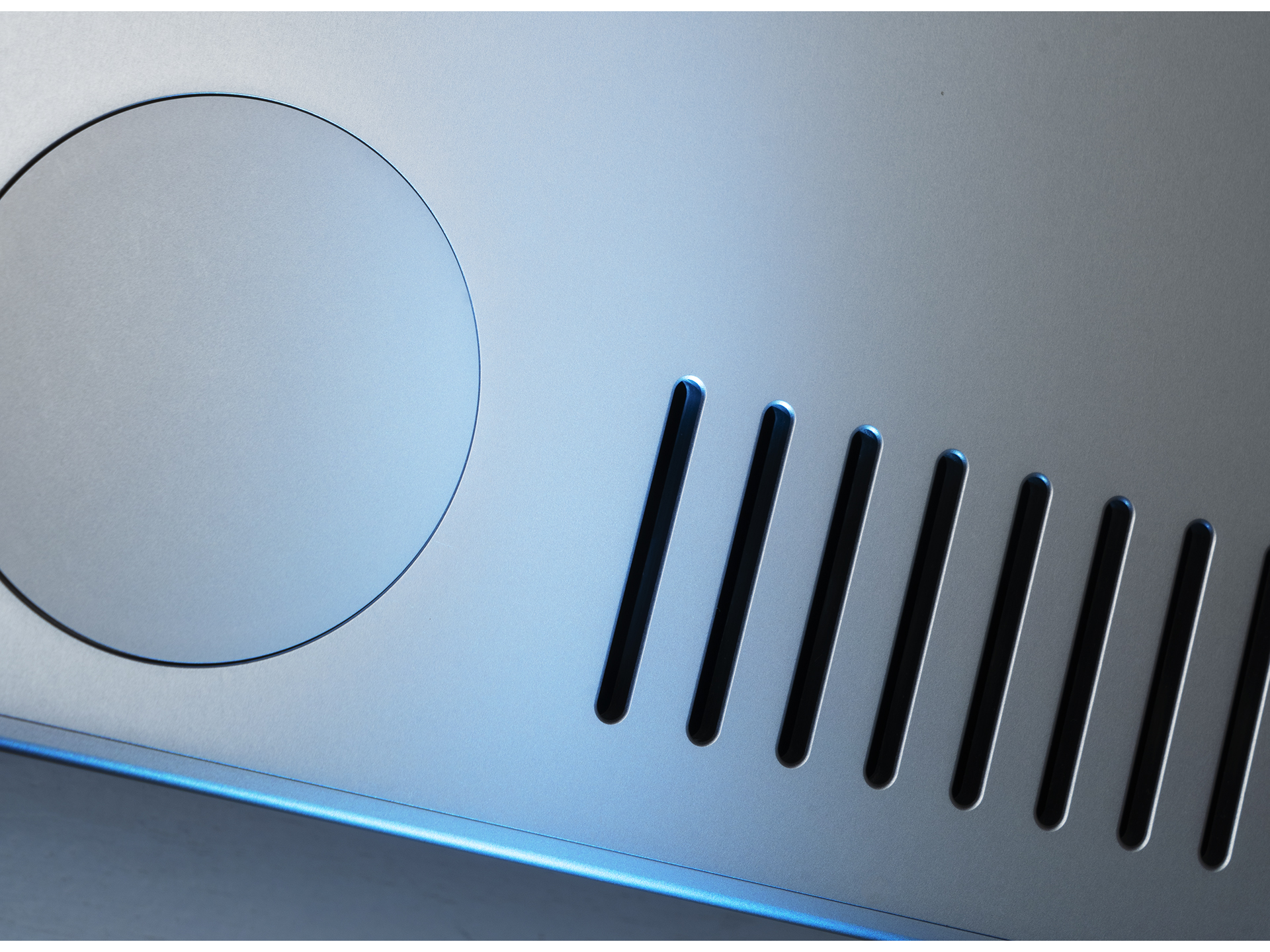
Most importantly, as fantastic as the digital section of the I1 is, even though the I1’s phono section is passed through it – the additional tonal saturation that vinyl nearly always provides still comes through with more than enough data points that you know you are listening to a record, however, I’m wondering if it’s still just the analog mastering coming through a completely uncolored chain. I’m still shaking my head over this, but it’s there and it’s fascinating.
Finally, all EQ settings are done in the digital domain for the utmost accuracy. Record collectors with broad enough collections to require RIAA, Decca, Columbia, EMI, and Teldec to fully enjoy their LPs can take full advantage of this functionality.
Whether tracking through acoustic selections or the heaviest rock, the I1s analog section brings a big, broad, dynamic rendition. While we don’t measure things, I can’t remember a phono section being this quiet, which again has me questioning if an all-analog signal path is even necessary.
Are you still with me?
Moving on to the digital section is equally compelling. If you head over to the specifications page of the CH website (please click here), you can see that it decodes every format you can think of and is a ROON endpoint. At this point, all signals are upsampled to 24bit/384kHz and then sent to the DAC section featuring multi-bit Delta Sigma converters, but more importantly utilizing CH’s proprietary CH-PEtER spline filters.
While unable to fully comprehend the complexity of this approach, this is without question one of the most natural-sounding DACs we’ve had the pleasure to use. I don’t really have a ton to say about the DAC because it is so uncolored. It’s one of the very precious few that don’t leave you saying, “wow, that sounds great for digital.” It’s just music. The difference between digital and analog through the I1 is much more down to the recording and mastering.
Everything is spacious, with big air everywhere. The obvious boxes of solid bass response and incredible dynamic ability are checked; what sets the CH apart from the pack is how it delivers the subtlest musical details. I’ve heard 50-thousand dollar DACs that aren’t this convincing, and this is an entire amplifier with DAC, Streaming, and analog capability.
Ch does their own board for streaming input, rather than the OEM that a lot of very high-end companies use, and they write their own code for their famous spline filters and MQA decoding, if that is still a thing for you. I’m sure this is why ROON files sound much more like ripped files via the CH than anything I’ve heard. The I1 also can take advantage of Tidal Select files.
As excellent as everything else is, my favorite feature on the i1s panel is the amplifier feedback control, which controls the ratio between global and local feedback in the power amplifier section. This allows fine-tuning the overall sound, making a much wider range of speakers an option.
With the YG Acoustics Summit speakers delivering a very tight, more damped bass response, backing off on the feedback (the I1 does this in 25% increments between 0 and 100) gives the speakers a slightly warmer overall presentation with a smoother yet detailed top end.
Turning it up to 100 to tighten the overall sound a bit is the perfect match for the Peak Consult Sinfonias, doing just the opposite. I enjoyed using this feature with every one of the speakers auditioned with the I1, and over the year, I probably used it with at least 20 different types. It’s not as broad as a global tone control, but it is a way to go from being 92% satisfied with the overall system outcome to 100%. A very nice touch, especially if you are an audio aficionado who likes to mix it up with different speakers more often than some of us do.
What you don’t get elsewhere
Unlike a number of fairly expensive, high-quality integrated amplifiers in the $10-20k range that offer splendid performance, none of them offer the sheer build quality or the scalability that the I1 does. Where some of them have built-in phono and digital capability, these modules are usually not to the same standard as the main amp/pre combination. Some offer a decent phono stage or internal DAC, with the other more of an afterthought. Each section of the I1 is a world-class component in its own right.
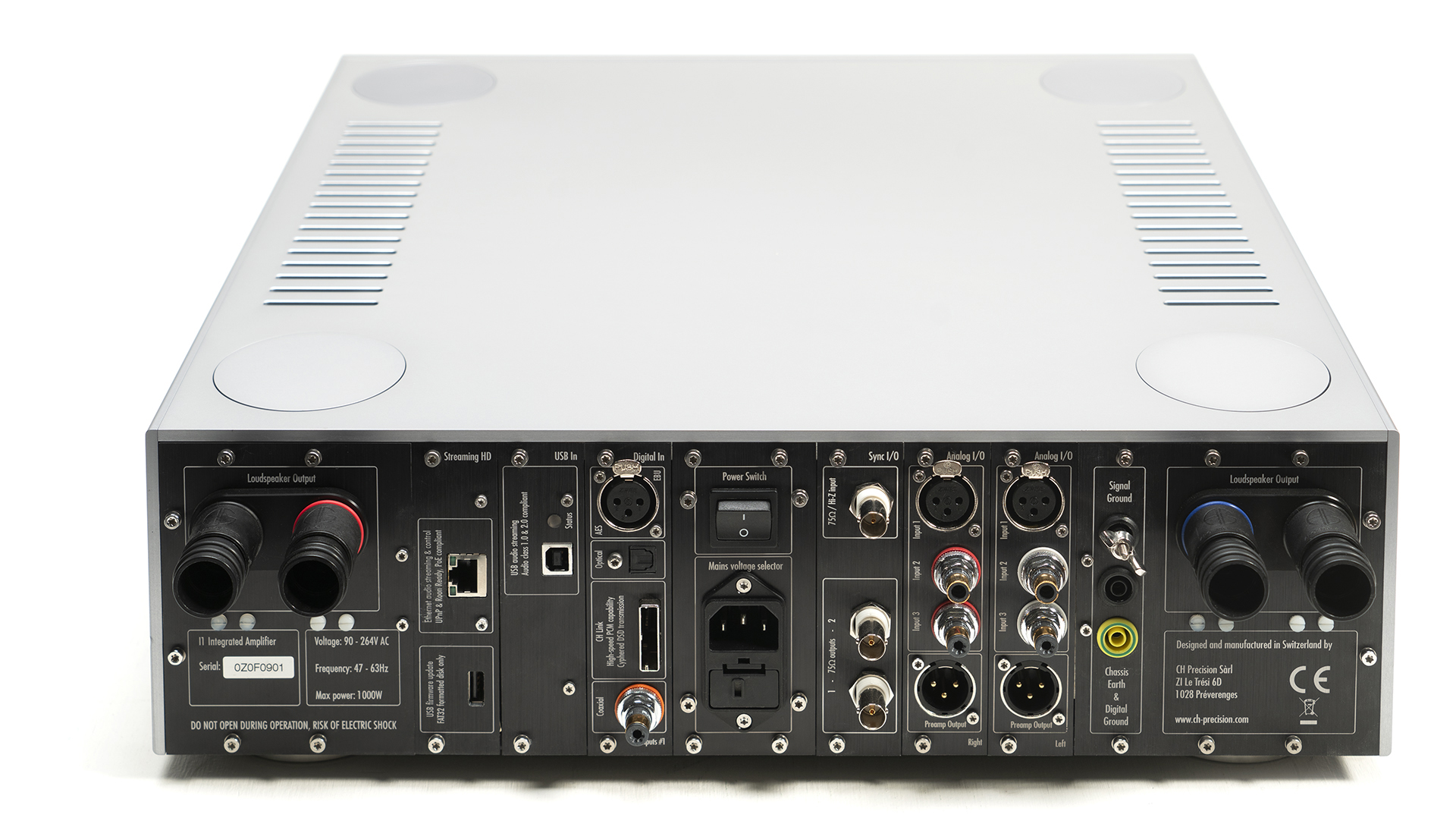
CH is unique in my experience in that both the DAC and the phono stage are reference-level products that share a chassis (though each section is thoroughly isolated mechanically and electrically) with pre and power amplifier sections. Usually, one or both of these sections are minimally configured, not up to the performance of the main amplifier. The I1 puts everything you need on one chassis, so if you can wrap your brain around a “once and done” philosophy, this is the music hub to get old with. Even the remote is cool, unlike the Happy Meal remotes, which are included with too many five-figure components. Compact, with minimal functionality, yet built to the same standard as the main component.
Technology serving music like nothing else
On many levels, the CH Precision I1 Integrated Amplifier is the most complicated piece of audio gear I’ve ever reviewed. It all disappears the minute you power it up and play music. You won’t care. It sounds so transparent and inviting that you can relax comfortably and just dig it. That’s the highest praise I can give any piece of technology. No doubt other reviews will go into more depth about the incredible tech that lurks inside the i1, but after living with it for so long, it’s lovely to experience music at this level of quality, forgetting about all the tech inside. The I1, to me, is high-tech done right.
While naysayers will be jumpy about the I1’s price, in context of what you are getting for your $54k – provided you purchase it with all the boards is genuinely one of the best values going in ultra high-end audio today. I defy you to find a preamplifier, power amplifier, DAC, phonostage, and all of the cables required to connect them together for anywhere near $54k. You could spend twice that on wire alone if you wanted to.
In the end, if you want to build an extremely high-performance system comprised of as few boxes as possible – there’s nothing better I’ve ever experienced. And good intentions aside, should you decide to dig deeper into the world of CH, you can still use the I1 as a core component. I also suspect that because of how few of these are made, the I1 fetches a high secondary market price as well if you must go the four-box phono, three-box DAC, and monoblock power amplifier route. Don’t laugh – I know a few people who have had this happen.
What you’re really getting with the CH Precision I1 is the result of a company that does everything themselves. When bits get jobbed out to different vendors to save costs, the original vision gets watered down, even if it’s subtly. Like many of the world’s greatest products (and I mean truly greatest products), this amplifier and the rest of the CH line are truly a solitary vision with flawless execution. This is not a design by a committee and assembled by an approved vendor product.
If that aligns with your vision of the things you enjoy the most, there is no better choice. This is why the I1 is our integrated Amplifier of the Year for 2025.
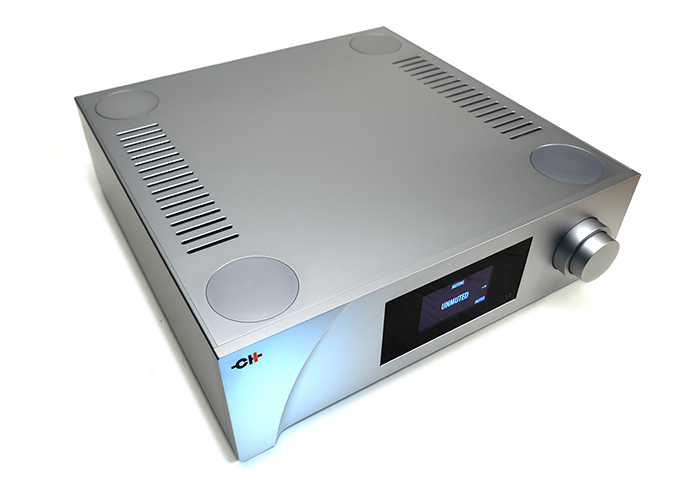
Peripherals
Turntable SME20 w/iV.Vi arm and Hana Umami Red cartridge
Speakers Fink Team Borg w/six pack of REL S510 subs, Peak Consult Sinfonia, YG Acoustics Summit
Cable Cardas Clear and Clear Light

